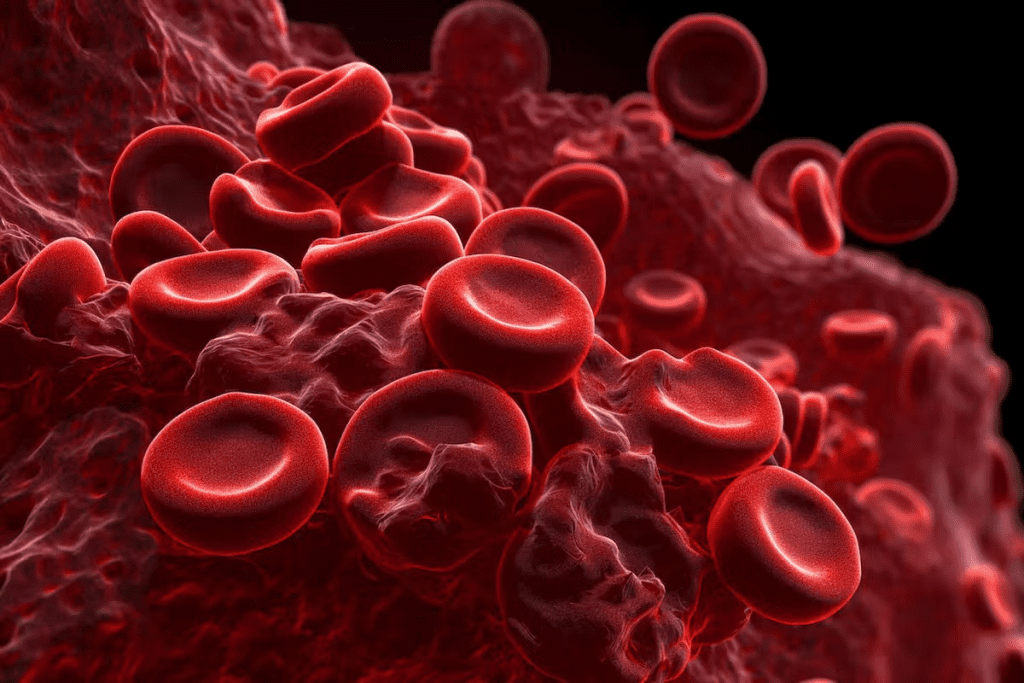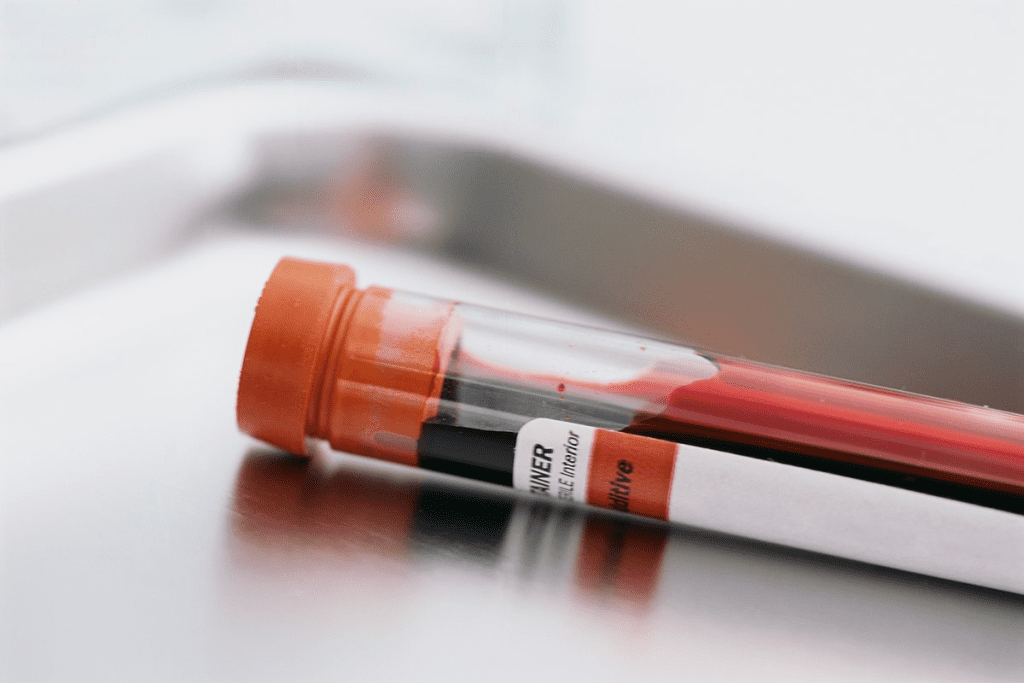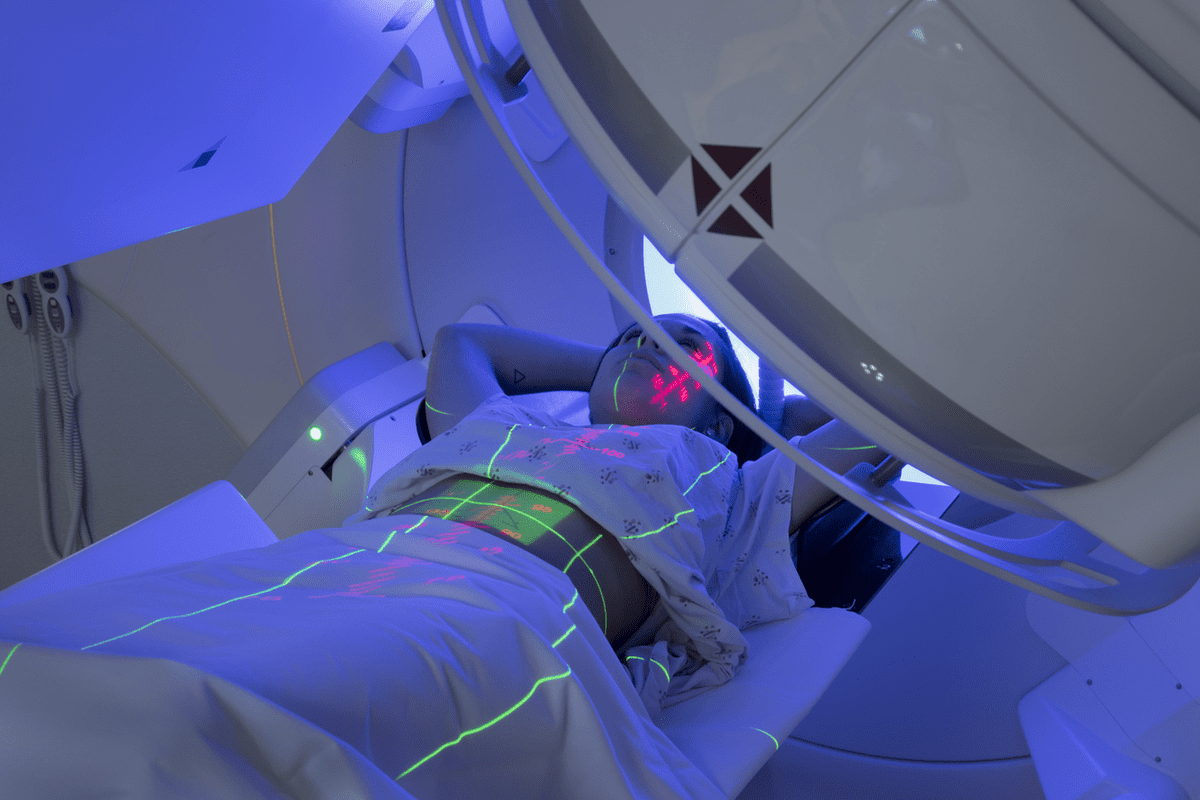
Abnormal blood clotting is a serious condition that affects millions globally. We offer top-notch healthcare and support for patients from around the world.What causes a blood clotting disorder? Learn the powerful underlying causes, from genetics to lifestyle, and discover the best treatment
Recent studies show that coagulation disorders can come from many sources. These include genetic factors, medical conditions, and outside influences. As healthcare experts, we know how vital it is to tackle these issues fully.
We will look into the different causes and risks of clotting disorders. We’ll cover both genetic and acquired factors. Our goal is to give our readers the knowledge they need to manage their health well.
Key Takeaways
- Coagulation disorders can be caused by genetic and acquired factors.
- Understanding the causes and risk factors is key for effective management.
- Comprehensive support is available for international patients.
- Abnormal blood clotting can be life-threatening if not treated.
- Early diagnosis and treatment can greatly improve outcomes.
The Normal Blood Clotting Process

When a blood vessel gets damaged, the body starts a complex process to stop bleeding. This process, called coagulation, involves many clotting factors and pathways. They work together to stop bleeding.
The Coagulation Cascade Explained
The coagulation cascade is a series of chemical reactions that form a blood clot. It starts with two main pathways: the intrinsic and extrinsic pathways. The intrinsic pathway is triggered by damage inside the blood vessels. The extrinsic pathway is caused by external trauma that lets blood out.
Both pathways meet at the common pathway. This leads to the formation of fibrin, which makes the clot stable.
The coagulation cascade involves clotting factors, mostly proteins made by the liver. These factors are activated in a specific order. Each factor triggers the next, making the response to injury stronger.
Essential Clotting Factors and Their Functions

Clotting factors are essential proteins in the coagulation cascade. Some key factors include:
- Prothrombin (Factor II): It gets converted into thrombin, which turns fibrinogen into fibrin.
- Fibrinogen (Factor I): It gets converted into fibrin, which forms the clot.
- Factor V and Factor VIII: They speed up the coagulation cascade.
- Tissue Factor (Factor III): It starts the extrinsic pathway.
Knowing how these clotting factors work is key to understanding blood clotting disorders. By seeing how they interact, we can grasp the complexity of blood coagulation. This helps us tackle the challenges of clotting disorders.
Overview of Blood Clotting Disorder
The term ‘blood clotting disorder’ refers to a group of conditions where blood clots abnormally. These can cause either too much clotting or bleeding, both serious health issues.
Definition and Basic Mechanisms
Blood clotting disorders affect how the body makes blood clots. Normal blood clotting is key to stopping bleeding when a blood vessel is hurt. It involves many clotting factors, proteins in the blood.
Disorders can make the body more likely to form clots or bleed too much. This happens when the coagulation cascade, a series of chemical reactions, is disrupted. This can be due to missing or abnormal clotting factors, or other factors like platelet count and function.
Prevalence and Demographics
The frequency of blood clotting disorders varies. Some, like hemophilia, are rare, while others, like deep vein thrombosis, are more common. Knowing who is at risk helps with health planning and care.
Some groups face higher risks. For example, genetic predispositions can increase the chance of certain disorders. Age, gender, and health conditions also play a part.
Understanding who is at risk helps doctors improve care. This leads to better health outcomes for patients.
Types of Blood Clotting Disorders
It’s important to know about the different blood clotting disorders. They can really affect someone’s life. Knowing the types is the first step to managing them.
Hypercoagulable Disorders
Hypercoagulable disorders make it easier for blood to clot. This can lead to serious problems like deep vein thrombosis (DVT) and pulmonary embolism (PE). Deep vein thrombosis is when a clot forms in a deep vein, usually in the legs. Pulmonary embolism is when a clot travels to the lungs and blocks blood flow.
Genetics, being immobile for a long time, and some medical conditions can increase the risk. For example, people with factor V Leiden mutation are more likely to get blood clots because of their genes.
- Genetic factors
- Prolonged immobilization
- Cancer and its treatment
- Hormone therapy
Hypocoagulable Disorders
Hypocoagulable disorders make it hard for blood to clot, leading to more bleeding. Hemophilia and von Willebrand disease are examples. Hemophilia is when there’s not enough clotting factors, causing long bleeding. Von Willebrand disease affects a protein needed for clotting.
Symptoms can be mild or severe, like easy bruising and frequent nosebleeds. Treating these conditions often means replacing the missing clotting factors.
“The management of blood clotting disorders requires a tailored approach, taking into account the specific type of disorder and the individual patient’s needs.” – Expert in Hematology
In summary, knowing about blood clotting disorders is key to good care. By understanding hypercoagulable and hypocoagulable disorders, doctors can create better treatment plans.
Genetic Causes of Blood Clotting Disorders
Genetic factors are a big part of blood clotting disorders. Knowing the genetic causes helps doctors diagnose and treat these conditions. Inherited deficiencies and genetic mutations are major contributors.
Inherited Clotting Factor Deficiencies
Bleeding disorders often come from inherited clotting factor deficiencies. Hemophilia A and Hemophilia B are examples. They happen when there’s not enough factor VIII or IX.
These conditions mostly affect males. The genes for these factors are on the X chromosome.
Genetic Mutations Affecting Coagulation
Genetic mutations can cause coagulation disorders by messing with clotting factors. Some mutations make too much or too little of these factors. Others make them not work right.
For example, some mutations can cause thrombophilia. This is when you’re more likely to get blood clots. Knowing about these mutations is key to managing clotting disorders.
Acquired Causes of Blood Clotting Disorders
It’s important to know about the acquired causes of blood clotting disorders. These causes can be treated with the right medical care and lifestyle changes. This is different from genetic causes, which are harder to change.
Medical Conditions That Affect Clotting
Some medical conditions can really mess with blood clotting. For example, cancer can make clotting worse because tumors produce substances that help clots form. Antiphospholipid syndrome, an autoimmune disease, also causes too much clotting by making antibodies that mess with clotting.
Liver disease is another condition that can mess with clotting. The liver makes clotting factors, and when it doesn’t work right, you might bleed more easily.
External Factors Affecting Coagulation
Things outside of our bodies can also affect how blood clots. Anticoagulant medications are meant to stop clots but can cause bleeding if not used right. Hormonal therapies, like those in hormone replacement therapy or certain contraceptives, can also change how blood clots.
Our lifestyle choices matter too. Smoking and obesity both raise the risk of clotting problems. Smoking harms the blood vessels, making them more likely to clot. Obesity causes inflammation, which can also mess with clotting.
Knowing about these causes helps doctors find better ways to stop and treat blood clotting disorders. This can lead to better health for patients.
Risk Factors for Developing Blood Clotting Disorders
Blood clotting disorders can be caused by several risk factors. These can be divided into non-modifiable and modifiable factors. Knowing these factors helps in early detection and treatment of clotting disorders.
Non-Modifiable Risk Factors
Non-modifiable risk factors are things we can’t change. These include our genes and age. If your family has a history of clotting disorders, you might be at higher risk. Also, older people are more likely to develop these disorders.
Genetic predispositions are a big factor. If your family has a history of clotting disorders, you’re at higher risk. Certain genetic mutations, like Factor V Leiden, can also increase clotting tendency.
Modifiable Risk Factors
Modifiable risk factors can be changed. These include obesity, smoking, lack of exercise, and some medical conditions. Changing these can lower the risk of clotting disorders.
Obesity increases inflammation and clotting tendency. Smoking damages blood vessels and affects clotting. Regular exercise improves circulation and heart health.
Certain medical conditions, like cancer and heart disease, can also raise the risk. Managing these conditions well is key to reducing clotting disorder risk.
Healthcare providers can prevent and manage blood clotting disorders by understanding and addressing risk factors. This approach improves patient outcomes and quality of life for those with these conditions.
Common Symptoms of Blood Clotting Disorders
The symptoms of blood clotting disorders can vary a lot. They depend on whether there’s too much or too little clotting. It’s important to know these symptoms to get help fast.
Warning Signs of Excessive Clotting
Too much clotting can cause pain, swelling, and warmth in a limb. We need to watch out for these warning signs to get medical help right away.
- Pain or tenderness in the leg, arm, or other areas
- Swelling or redness in the affected limb
- Warmth or discoloration of the skin
These signs might mean you have a deep vein thrombosis (DVT) or another clotting problem. You should see a doctor right away.
“Early recognition of clotting disorder symptoms can significantly improve patient outcomes.”Medical Expert
Indicators of Insufficient Clotting
Not enough clotting can show different signs. These include bleeding gums, easy bruising, and bleeding that won’t stop after an injury. It’s key to spot these indicators to handle the condition well.
| Symptom | Description |
| Bleeding Gums | Frequent or spontaneous bleeding from the gums |
| Easy Bruising | Bruising without significant trauma or injury |
| Prolonged Bleeding | Bleeding that doesn’t stop after an injury |
Knowing these symptoms helps people get medical help quickly. This can stop serious problems from happening.
Diagnosing Blood Clotting Disorders
Diagnosing blood clotting disorders is a detailed process. It starts with a thorough medical history and physical exam. Getting the diagnosis right is key to managing the condition well.
Initial Assessment
The first step is to identify who might be at risk. Doctors will ask for a detailed medical history and do a physical check-up.
Laboratory Tests
Lab tests like prothrombin time (PT) and activated partial thromboplastin time (aPTT) are essential. They measure how long it takes for blood to clot. These tests help diagnose clotting disorders.
Advanced Diagnostic Procedures
Sometimes, more tests are needed. Imaging studies like ultrasound, CT scans, or MRI might be used. They help confirm the diagnosis.
Treatment Approaches for Blood Clotting Disorders
Managing blood clotting disorders needs a detailed plan. Each patient’s case is different. So, treatments are made to fit their unique needs.
Medications for Managing Clotting Issues
Medicines are key in treating clotting disorders. Anticoagulants and antiplatelet agents help stop clots from forming. Anticoagulants stop clotting factors from being made. Antiplatelet agents stop platelets from sticking together.
Medicines like warfarin, apixaban, and rivaroxaban are anticoagulants. Aspirin and clopidogrel are antiplatelet agents. The right medicine depends on the condition and the patient’s health.
- Warfarin: Needs regular blood tests to get the right dose.
- Direct Oral Anticoagulants (DOACs): Don’t need blood tests as often.
- Aspirin: Used to prevent clots in arteries.
Interventional and Surgical Options
Sometimes, procedures or surgery are needed. Thrombectomy removes clots from blood vessels. It’s a lifesaver for stroke or deep vein thrombosis.
Surgery might fix or replace damaged blood vessels or heart valves. It’s needed for complications like pulmonary embolism or chronic pulmonary hypertension.
Combining medicines, procedures, and surgery helps manage clotting disorders. It’s important to work with healthcare providers to find the best treatment for each person.
Complications of Untreated Blood Clotting Disorders
Ignoring blood clotting disorders can have serious health effects. These disorders can cause both immediate and long-term problems if not treated.
Acute Complications
Untreated blood clotting disorders can be deadly. A major risk is pulmonary embolism, where a clot blocks the lungs. This can lead to serious breathing issues.
Another serious issue is stroke. It happens when a clot blocks blood to the brain. This can cause brain damage or even death.
Other acute problems include:
- Deep vein thrombosis (DVT), which can turn into pulmonary embolism if not treated fast.
- Cardiac issues, like heart attack or cardiac arrest, from clots in heart arteries.
Chronic Complications
Long-term issues from untreated blood clotting disorders can really lower your quality of life. Post-thrombotic syndrome (PTS) is a big problem. It causes long-term pain, swelling, and disability in the affected limb.
| Chronic Complication | Description | Impact on Quality of Life |
| Post-thrombotic syndrome (PTS) | Chronic condition causing pain and swelling | Significant impact due to chronic pain and disability |
| Chronic venous insufficiency | Condition leading to swelling and skin changes | Moderate to severe impact due to persistent symptoms |
Knowing about these complications shows why we must treat clotting disorders quickly. Early treatment can greatly lower the risk of these problems. This improves health outcomes and quality of life for patients.
Living with a Blood Clotting Disorder
Living with a blood clotting disorder can be tough, but it’s possible to live well. To manage it well, you need a plan that covers daily life, mental health, and how others see it.
Daily Management Strategies
Managing a blood clotting disorder every day is key. First, stick to your medication as told by your doctor. This might include drugs to stop clots or help with clotting. It’s also important to know when you might need to see a doctor.
- Check your clotting factor levels often
- Eat well to keep your heart healthy
- Drink plenty of water to avoid dehydration
- Stay away from things that could hurt you or make you bleed
Psychological and Social Aspects
The mental side of having a blood clotting disorder is big. It can cause worry, fear, and stress. Having friends, family, and support groups can really help.
Important parts of getting mental and social support include:
- Seeing a counselor or therapist for stress and anxiety
- Joining groups to talk and get advice from others
- Teaching your loved ones about your condition to get their support
With a good plan that includes daily care and mental support, people with blood clotting disorders can live better. They can also lower their risk of serious problems.
Emergency Situations and When to Seek Help
It’s important to know the signs of emergency situations related to blood clotting. These disorders can lead to serious conditions that need quick medical help. We’ll talk about the key signs that mean you should get urgent care.
Recognizing Life-Threatening Clotting Events
Life-threatening clotting events, like pulmonary embolism or deep vein thrombosis, can happen fast and without warning. You might feel sudden chest pain, have trouble breathing, or have severe leg pain and swelling. If you or someone you know has these symptoms, it’s very important to seek medical help right away.
Other signs of a serious clotting event include a fast heart rate, feeling confused, or losing consciousness. If you see these signs, call emergency services or go to the nearest emergency room fast.
Managing Severe Bleeding Episodes
Some people with blood clotting disorders might have severe bleeding episodes. These can be heavy or hard to stop, either inside the body or outside. Look out for big bruises, frequent nosebleeds, or bleeding that won’t stop after a while.
If you have a severe bleeding episode, apply pressure to the wound and get medical help right away. It’s a good idea to have a plan for emergencies. Know where the nearest healthcare facility is and have a way to get there quickly.
Knowing about these emergency situations and how to react can really help people with blood clotting disorders. We suggest everyone learns about these signs and what to do. This can make a big difference in their health.
Special Populations with Clotting Concerns
Blood clotting disorders can affect anyone. But some groups face special challenges. We’ll look at the issues pregnant women, children, and the elderly deal with.
Pregnancy and Blood Clotting Disorders
Pregnancy raises the risk of blood clots. This is because of changes in how blood clots and the pressure in veins. These changes help prevent bleeding during birth but also raise clotting risks.
Women with clotting disorders or other risk factors need close monitoring. This is to avoid serious problems.
The main reasons for clotting risks in pregnancy are:
- Increased venous pressure in the legs and pelvis
- Changes in blood coagulation factors
- Decreased mobility, which is more common in later pregnancy
Pediatric and Geriatric Considerations
Children and teens with clotting disorders need special care. Their conditions can affect their growth and development. Treatment must match their age and developmental stage.
The elderly face unique challenges. Age-related changes can affect how blood clots and increases bleeding and clotting risks. Conditions like heart disease and taking many medications can make managing clotting disorders harder.
Key points for managing clotting disorders in these groups include:
- Assessing the risk-benefit of anticoagulant therapy
- Watching for signs of bleeding or clotting
- Adjusting treatment based on age-related changes and other conditions
Understanding the unique needs of these populations helps healthcare providers manage blood clotting disorders better.
Advances in Blood Clotting Disorder Research
New studies are uncovering the mysteries of blood clotting disorders. This is opening doors to new treatments. We’re seeing the birth of new ways to help patients, thanks to ongoing research.
Novel Therapeutic Approaches
Hematology has seen big leaps, leading to new treatments for blood clotting issues. Direct oral anticoagulants (DOACs) are a big step forward. They’re easier to use because they don’t need constant blood tests.
Gene therapy is another exciting area. It aims to fix the genetic problems that cause some clotting disorders. Though early, it could lead to lasting solutions for these conditions.
Future Directions in Management
As we learn more, treatments will likely become more tailored. This means therapies will be adjusted based on each patient’s unique needs. This could make treatments more effective and safer.
New anticoagulants are on the horizon, aiming to be safer and work better. Better diagnostic tools will also help catch clotting disorders sooner. This means doctors can act faster to help patients.
| Therapeutic Approach | Description | Potential Benefits |
| Direct Oral Anticoagulants (DOACs) | New generation of anticoagulants that do not require regular blood monitoring | Convenience, reduced risk of complications |
| Gene Therapy | Treatment aimed at correcting genetic mutations underlying clotting disorders | Potential for definitive treatment, reduced need for lifelong medication |
| Personalized Medicine | Tailoring treatment to individual patient profiles | Improved treatment efficacy, reduced adverse effects |
We’re on the brink of a new chapter in managing blood clotting disorders. Thanks to research and technology, we’re set to see better care for those affected. This could greatly improve their lives.
Conclusion
Managing and treating blood clotting disorders needs a full plan. This plan must meet the complex needs of those with these conditions.
Healthcare teams can offer better care by knowing the causes, symptoms, and treatments. This knowledge helps improve patient results. We help international patients find top medical care.
It’s key to give complete care to those with blood clotting disorders. Our goal is to help people manage their conditions well. We aim to enhance their life quality through education and awareness.
FAQ
What causes blood coagulation disorders?
Blood coagulation disorders can come from genetics or acquired factors. Genetics include inherited factor deficiencies. Acquired factors include medical conditions and lifestyle choices.
What is the normal blood clotting process?
The normal clotting process is complex. It involves many clotting factors working together. This forms a stable clot to prevent excessive bleeding.
What are hypercoagulable and hypocoagulable disorders?
Hypercoagulable disorders increase the risk of dangerous clots. Hypocoagulable disorders lead to bleeding problems because of inadequate clot formation.
How are blood clotting disorders diagnosed?
Diagnosing these disorders requires a detailed medical history. Laboratory tests like PT and aPTT are used. Imaging studies are also part of the diagnosis.
What are the treatment options for blood clotting disorders?
Treatments include medications like anticoagulants. Procedures like thrombectomy and surgery are also used. The treatment depends on the condition.
What are the complications of untreated blood clotting disorders?
Untreated disorders can cause serious problems. These include pulmonary embolism and stroke. Long-term issues like post-thrombotic syndrome can also occur.
How can individuals manage blood clotting disorders daily?
Daily management involves following medication regimens. Lifestyle adjustments and symptom monitoring are also key. Seeking social support is important too.
What are the emergency situations related to blood clotting disorders?
Emergency situations include sudden chest pain or difficulty breathing. Severe bleeding episodes also require immediate medical help.
Are there special considerations for certain populations with clotting concerns?
Yes, pregnant individuals, children, and the elderly need special care. Their unique conditions and risks require tailored approaches.
What advances are being made in blood clotting disorder research?
Research is focused on better understanding clotting disorders. New treatments like direct oral anticoagulants and gene therapy are being developed. These offer hope for better treatments.
References
- World Thrombosis Day. (2025, May 18). Factor V Leiden. https://www.worldthrombosisday.org/factor-v-leiden/
- National Library of Medicine. (2001). Factor V Leiden thrombophilia. MedlinePlus Genetics.https://medlineplus.gov/genetics/condition/factor-v-leiden-thrombophilia/







